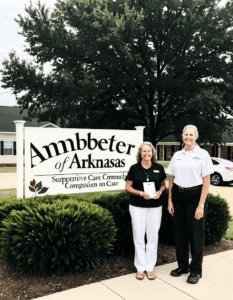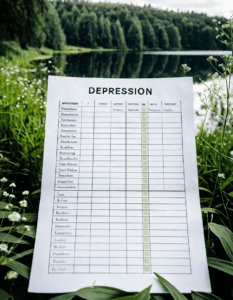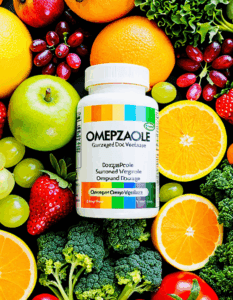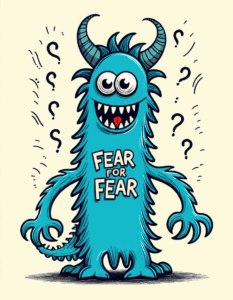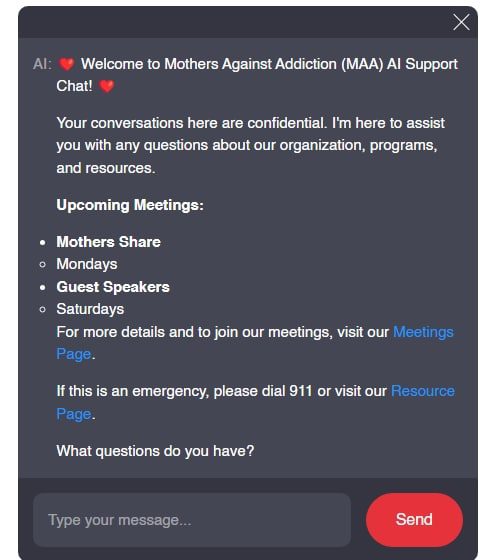Addiction is a heavy burden, not just on those struggling but also on the families who love them. When it comes to opioid addiction, the stakes are even higher. Yet, there’s hope on the horizon. Medication-assisted treatment (MAT) combines FDA-approved medications with counseling and behavioral therapies, proving to be a lifesaver for countless individuals. Let’s dive deeper into the extraordinary successes and nuances of MAT, showcasing its transformational impact through real-life examples and comprehensive analysis.
How Medication-Assisted Treatment (MAT) Works
So, how does MAT work its magic? Medication-assisted treatment (MAT) employs medications like methadone, buprenorphine (Suboxone), and naltrexone (Vivitrol) to manage withdrawal symptoms and curb cravings. By doing so, MAT helps individuals regain control over their lives, marking a significant stepping stone on the road to recovery.
Methadone: Stabilizing Lives
For decades, methadone has been a rock-solid pillar in the MAT toolkit. As a long-acting opioid agonist, methadone alleviates withdrawal symptoms and minimizes cravings, helping individuals stabilize and reclaim a sense of normalcy.
Suboxone: A Game-Changer
Suboxone, a combination of buprenorphine and naloxone, has breathed new life into MAT. It’s a partial agonist, meaning it eases cravings without the high associated with full agonists. This makes it a safer, lower-risk option for those battling opioid addiction.
Vivitrol: The Monthly Shield
Vivitrol (naltrexone) stands out as a non-addictive, monthly extended-release medication that blocks opioids’ euphoric and sedative effects. This “monthly shield” is especially suitable for those keen on recovery but not on daily medication routines.
Top 7 Success Stories of Medication-Assisted Treatment (MAT)
Let’s hear it straight from the trenches—these seven success stories highlight how MAT has changed lives for the better.
1. Vermont’s Hub-and-Spoke Model:
Vermont’s innovative hub-and-spoke model integrates MAT with comprehensive health services. This model has reduced opioid-related deaths drastically by providing seamless care coordination. It’s become a prototype for other regions striving to offer holistic addiction treatment.
2. Dr. Ruchi Fitzgerald’s Outreach:
In the bustling city of Chicago, Dr. Ruchi Fitzgerald has expanded access to MAT amongst marginalized communities. Her targeted approach has demonstrated high retention and success rates, serving as a beacon of hope for many.
3. Project RIO (Recovery Initiative Outreach):
New Mexico’s Project RIO has melded MAT with peer support, job training, and housing assistance. This project has shown promising results by decreasing relapse rates and enhancing quality of life. Peer support in recovery has proven to be a pivotal component in many successes.
4. Massachusetts General Hospital’s Bridge Clinic:
Massachusetts General Hospital’s Bridge Clinic offers immediate access to MAT for individuals in crisis. The rapid access model is effective and has been a guiding light for urgent addiction needs.
5. Brandon Novak’s Transformation:
Brandon Novak, former professional skateboarder, has a gripping story from addiction to recovery through MAT. His journey and advocacy illustrate how combining MAT with therapy can turn lives around. His golden retriever energy now inspires countless others to seek help.
6. Rhode Island’s Incarceration and MAT Program:
Rhode Island’s prison system incorporates MAT to assist soon-to-be-released inmates. This approach has led to a significant decrease in post-release overdose deaths, highlighting the preventive power of MAT.
7. Kaiser Permanente’s Integrated Care Model:
Kaiser Permanente’s integrated care model, which combines MAT, mental health services, and primary care, has yielded notable reductions in opioid misuse. This comprehensive strategy significantly improves patient outcomes.
| Aspect | Details |
| Definition | Medication-Assisted Treatment (MAT) is the use of medications, in combination with counseling and behavioral therapies, for treating substance use disorders (SUDs) and sustaining recovery. |
| Approved Medications | 1. Methadone: Reduces cravings and prevents withdrawal symptoms. 2. Buprenorphine: Reduces cravings and prevents withdrawal symptoms. 3. Naltrexone: Blocks the effects of opioids. |
| Mechanism of Action | – Methadone and Buprenorphine: Act on the same brain targets as opioids, helping to reduce cravings and withdrawal symptoms. – Naltrexone: Blocks opioid receptors, preventing any euphoric effects. |
| Essential Components | – Medications: FDA-approved drugs like Methadone, Buprenorphine, and Naltrexone. – Counseling: Including different forms of behavioral therapy. – Behavioral Therapies: Cognitive-behavioral therapy (CBT), contingency management, motivational interviewing, etc. |
| Benefits | – Reduces opioid cravings and withdrawal symptoms. – Blocks euphoric effects of opioids. – With counseling: Improves treatment retention, decreases illicit opiate use, reduces the risk of overdose, helps patients sustain recovery. |
| OTPs (Opioid Treatment Programs) | Facilities authorized to provide MAT as part of a comprehensive opioid use disorder treatment plan, including required counseling and behavioral therapies. |
| Effectiveness | Research shows that combining medication, counseling, and/or behavioral therapies is effective for treating substance use disorders (SUDs). |
| Considerations | – MAT is tailored to the individual needs of the patient. – Requires close medical supervision. – Counseling and behavioral therapies are critical components and mandatory in all OTPs. |
Navigating Barriers and Enhancing Access to Medication-Assisted Treatment (MAT)
Despite the outstanding successes of Medication-assisted treatment (MAT), several barriers continue to impede its widespread adoption. Tackling these obstacles is crucial for reaching more individuals in need.
Overcoming Stigma: Education and Awareness
Stigma remains a major hurdle. By educating the public and healthcare professionals about MAT’s safety and effectiveness, we can dismantle the bias that stops many from seeking help. It’s a conversation that needs to happen at every level—from community gatherings to national forums like Tedtalk App.
Regulatory Reform: Expanding Access
Access to MAT is often hampered by regulatory constraints, especially in rural areas. Advocacy efforts aimed at policy reforms, like increasing funding and reducing bureaucratic barriers, are essential for broader accessibility.
Training and Support for Providers
Boosting provider education is vital. Comprehensive training and ongoing support can empower healthcare professionals to confidently implement MAT into their practices. This can bridge the gap between inpatient Vs. outpatient treatment, ensuring continuous and effective care.
The Future of Medication-Assisted Treatment (MAT): Innovations and Insights
Medication-assisted treatment (MAT) isn’t static; it’s an ever-evolving landscape filled with potential.
Digital Health Interventions
Emerging technologies like telehealth are expanding MAT’s reach. These digital tools allow for remote monitoring and counseling, which is a boon for those in geographically isolated areas or with limited mobility.
Personalized Treatment Approaches
The future looks bright with personalized medicine on the horizon. Tailoring MAT regimens to individual genetic profiles and specific addiction patterns could make treatments even more effective and reduce side effects.
Community and Peer Involvement
Community and peer involvement can significantly boost MAT outcomes. Empowering individuals with lived experiences through peer support networks bridges the gap between clinical treatment and real-world recovery. They offer relatable insights that help sustain recovery.
Redefining Recovery with Medication-Assisted Treatment (MAT)
Medication-assisted treatment (MAT) has opened new doors, providing a lifeline to those wrestling with opioid addiction. As we step into 2024 and beyond, MAT continues to evolve, offering renewed hope and healing to countless individuals and their families. By breaking barriers, advancing research, and fostering inclusive and innovative care models, MAT stands firm as a cornerstone in the fight against opioid addiction.
At Mothers Against Addiction, we are committed to supporting parents through every step of their children’s journey to recovery. For more on how we can help, visit holistic addiction treatment.
In a world of ever-changing challenges, MAT’s adaptability and effectiveness offer a solid promise of better days ahead. With collective effort and unwavering support, we can transform lives, one success story at a time.
Medication-assisted treatment (MAT) Success
Medication-assisted treatment (MAT) has proven to be a highly effective tool in the battle against addiction. At its core, MAT combines medication with counseling and behavioral therapies. This approach, when correctly implemented, can significantly reduce the risk of relapse and improve recovery outcomes.
Interesting Trivia: Did You Know?
Ever wondered what might be as thrilling as a new season of your favorite crime series, like Foyle ‘s War? Well, it’s learning that MAT isn’t just about popping a pill! The United States has seen a marked improvement in addiction recovery rates due to this multifaceted approach. Combining medication with therapy works wonders, much like a detective solving a well-spun mystery.
A fascinating nugget to chew on: some states have even allocated funds specifically for MAT programs, showing significant returns similar to getting a MD state refund. It’s a win-win for both individuals seeking recovery and society at large.
Fun Facts: Remarkable Outcomes
Here’s a fun fact: studies have shown that MAT can cut the risk of fatal overdoses by more than half. That’s akin to unexpectedly discovering that us home loan rates have drastically dropped overnight. Both scenarios are game-changers, really.
Another gem for the trivia buffs: the medications used in MAT, such as methadone, buprenorphine, and naltrexone, don’t just address withdrawal symptoms—they also help normalize brain chemistry and block the euphoric effects of drugs. So, the next time you discuss addiction treatment, you might impress someone with this tidbit.
Peeking into the dynamic world of MAT demonstrates just how life-altering this technique can be, from reducing the cravings and withdrawal symptoms to supporting long-term recovery. Keep this in mind—every piece of information deepens our understanding and appreciation of the tools that make recovery possible.
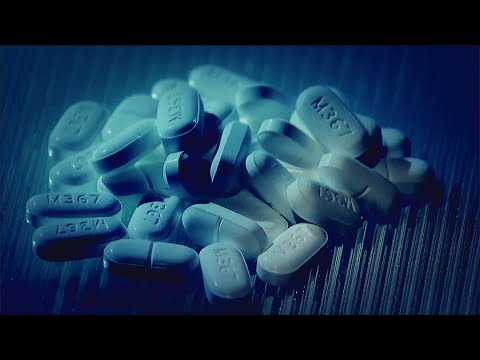
What are the examples of medication assisted treatment mat?
Examples of medication-assisted treatment (MAT) include using FDA-approved medications like methadone, buprenorphine, and naltrexone, combined with counseling and behavioral therapies. These medications help reduce cravings and withdrawal symptoms, making it easier for individuals to focus on recovery.
What does mat stand for medication?
MAT stands for Medication-Assisted Treatment, which involves using medications like methadone, buprenorphine, and naltrexone, along with counseling and behavioral therapies, to treat substance use disorders.
What is the difference between mat and OTP?
MAT (Medication-Assisted Treatment) involves using medications and behavioral therapies to treat substance use disorders, while OTPs (Opioid Treatment Programs) specifically provide MAT for opioid use disorders and require patients to receive counseling as part of the treatment.
What is the difference between mat and sud?
MAT (Medication-Assisted Treatment) is a treatment approach that combines medications and therapies to treat substance use disorders. SUD (Substance Use Disorder) refers to the condition being treated, encompassing any problematic use of substances like drugs or alcohol.
What is an example of mat?
An example of MAT is the use of buprenorphine, in combination with counseling, to help a person manage opioid dependency and work towards recovery.
How does the MAT program work?
The MAT program works by providing individuals with medications like methadone or naltrexone to reduce cravings and withdrawal symptoms. This is coupled with counseling and behavioral therapies to address the underlying issues and help sustain recovery.
What is MAT and how does it work?
MAT, or Medication-Assisted Treatment, combines FDA-approved medications with counseling and behavioral therapies to treat substance use disorders. The medications help manage withdrawal symptoms and cravings, making it easier to focus on recovery efforts.
How effective is MAT treatment?
MAT treatment has proven to be highly effective when medications are used alongside counseling and behavioral therapies. The combined approach helps improve patient outcomes, reduce the risk of relapse, and support long-term recovery.
What are the disadvantages of MAT?
Disadvantages of MAT can include the potential for medication misuse, the stigma associated with using medications for addiction, and the need for ongoing medical supervision. Some people may also experience side effects from the medications.
What is an OTP in a hospital?
In a hospital setting, OTP (Opioid Treatment Program) refers to a structured program that provides Medication-Assisted Treatment specifically for individuals with opioid use disorders, including medications and required counseling.
What does OTP stand for in substance abuse?
OTP stands for Opioid Treatment Program, which is a comprehensive program providing Medication-Assisted Treatment specifically for those struggling with opioid use disorder, including medications like methadone, buprenorphine, and required counseling.
What is the opioid treatment program?
The opioid treatment program (OTP) is a structured initiative focused on treating opioid use disorders using Medication-Assisted Treatment, which combines medications like methadone and buprenorphine with mandatory counseling and behavioral therapies.
What is the new name for mat?
The acronym MAT still stands for Medication-Assisted Treatment, despite any changes or updates in protocols or treatment approaches over time.
What does mat mean in medication?
In medication contexts, MAT means Medication-Assisted Treatment, which involves using specific medications to manage cravings and withdrawal symptoms, combined with counseling to treat substance use disorders.
What does mat mean in nursing?
In the nursing field, MAT refers to Medication-Assisted Treatment, which leverages nurses’ expertise in administering medications and providing counseling to support patients recovering from substance use disorders.
What is the treatment for mat?
Treatment for MAT includes administering FDA-approved medications like methadone, buprenorphine, or naltrexone with ongoing counseling and behavioral therapies to address both physical and psychological aspects of substance use disorders.
What are the options for MOUD?
Options for MOUD (Medications for Opioid Use Disorder) include methadone, buprenorphine, and naltrexone. These medications help manage cravings and withdrawal symptoms, aiding individuals in their recovery journey.
What are the four common components of a primary care mat integration model?
The four common components of a primary care MAT integration model include screening and diagnosis, pharmacotherapy (use of medications), counseling and behavioral therapies, and care coordination to ensure comprehensive treatment and support.
What is the easy mat for opioid addiction act?
The EASY MAT for Opioid Addiction Act focuses on simplifying access to Medication-Assisted Treatment for opioid addiction, making it easier for people to receive necessary medications and counseling services, thus improving treatment outcomes.





